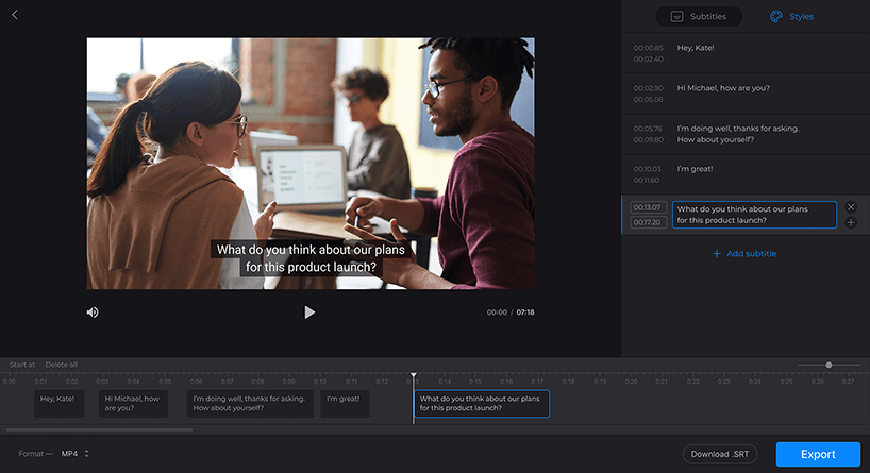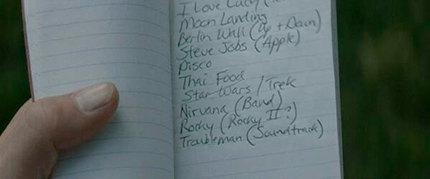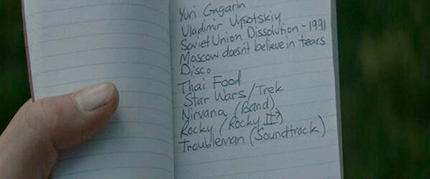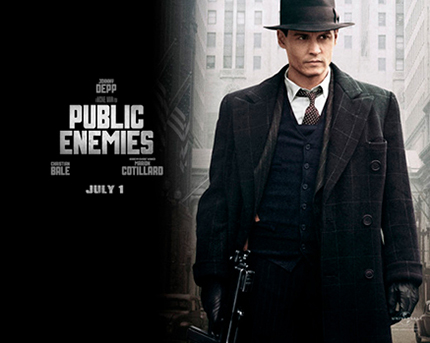
How does the translation of films take place and the role of a translator in this process?
Localization of the film is not a simple literal translation or dubbing, but the adaptation of the picture to the conditions of a particular country. This is a more serious work than localization of videos. The process differs not only in its scale, but also in many nuances. Such work is carried out by companies specializing in film translation, as it requires knowledge of details and subtleties, experience of professionals.
Film translation is an industry that includes a fairly long chain of actions of specialists who alternately perform their part of work. The process is managed and directed not by studio managers, but the producers and film distributors.
Translator is not the first person with whom the localization of the film begins
Before the material needed to complete the work goes to translator, it passes several serious stages. First, the distributors and the producer approve the localization option. Then, based on the decision made by the production team, marketing experts take up the case. They develop and prepare advertising materials in the language of the country in which the film will be shown. Then, the studio that will deal directly with localization, prepares originals, complies dialogue sheets, places time codes (a stopwatch marking the beginning and end of each of the characters' direct speech) on the editing sheets (in some cases, the translator puts down the time codes).
And only after that, the film, divided into small fragments, is sent to the translator. Watermarks are applied to the source code, and the studio management clearly sets goals and objectives.
Various types of localization and features of working with them
The decision on the localization format is made by the producers and distributors, while the translator performs the task. The type of translation depends on the form in which the film will be shown to the viewer.
Translation with subtitles
This is an option that gain more and more popularity. If the film is not duplicated, but accompanied by subtitles, the viewer has the opportunity to hear the voice acting of the original, the real voices of the actors, shades of pronunciation, the tone of voice, etc. In this case, you do not need to perform a number of works, required for other localization formats.
Organization of subtitles is a simpler job. The main thing, in addition to the correct translation of the sounding speech, is that the translator is required to put the phrase in the time interval when it is pronounced on the screen. Therefore, depending on the features of the sound of the original language, sentences can be shortened or enlarged. Such changes are based on the actions that occur on the screen.
Now this process has been simplified. There are even computer programs that allow you to easily apply subtitles to images even without downloading software.

Features of translation for films with voiceover
Voiceover is a format that combines both voices that duplicate actors and sounds recorded during the filming. The original audio track is overlaid with a translation version voiced by one or many actors in the language of the country where the film will be shown. The most obvious example of such a translation can be the films made in the 80-90s in the era of video recorders and VHS-cassettes. At that time for the voice-over of films (often pirated copies) the translators who themselves read out the text were involved. Some of the voices and features of the translation have become legendary and are still remembered.
The main task of the translator is to compose dialogues and direct speech in such a way that the time intervals when pronouncing the translation coincide with the time for which the actors pronounce the same words in the original language. Otherwise, a mismatch in time can spoil the perception of the picture and confuse the viewer. The time difference is allowed to be no more than 5%, although in reality the duration of uttering a phrase in English and, for example, Ukrainian or Russian can reach up to 15-20%.
Translation of a movie for dubbing
Dubbing is a variant in which the original audio track, on which the voices of film actors are recorded, is completely replaced. This is the most painstaking task for translators. In addition to the coincidence of the speech uttered by the dubbing actors, fine work is also required to completely match the sound of phrases and the movement of the lips of the actors. This procedure is called stacking, and special people are engaged in such work. However, there are also stacker translators who both translate and track a per-second match.
An experienced translator simultaneously composes the text intended for the dubbing actor, compiles and supplements. They note any other actions of the character (cough, yawning, etc.). Aspiration, intonation and other details mentioned in such notes simplify the work with dubbing and make it more effective.
Difficulties of work of a translator with films
Work experience, good knowledge of the language, detailed explanations given by translation studios to phraseological units, jokes and original expressions allow us to fully reveal what the directors have planned. The task of the translator is to convey the original meaning of the action, for which additional explanations are required. But there are some points that should be discussed in more detail.
Adaptation of references and jokes in translations
One of the most difficult moments to translate is the comedic elements of conversations. Translators have difficulties in the following cases:
- the phrase is based on a historical event, phenomenon and historical personality, which are perceived by the target audience in a completely different way than by the residents of the country that produces the film;
- at the heart of what has been said is a play on the words of the original language;
Such moments cause difficulties in the work of translator. The phrases must be adapted to the target language and understandable to the audience. At the same time, there are several concerns: the phrase may be too simplified and will not fit into the general outline of the film, the adaptation may be unsuccessful and the chosen reference will either become incomprehensible or fall out of the general mood.
An example of a successful adaptation is the film about Captain America, in which the original entries of the hero's to-do list of the film were not translated, but were completely adapted to the perception of foreign viewers.


Facts and context of the film in translations
The specialist needs to understand the specifics and facts related to what is happening on the screen. To do this, the creators of the film or producers leave comments when sending the material, or edit the received text. With urgent work, it is not always possible to study the material and understand the context, so competent distributors and large companies take this into account and allocate enough time for translation.
Advertising materials, slogans, names
As already mentioned, the localization of the film is not only the work of the translator. Promotional materials, slogans, titles, names and other advertising products are prepared before the film is transferred to the translator.
By the time the source code falls into the hands of the translator, marketing experts are already solving issues related to the name of the film in the countries where the film will be shown, with slogans that will accompany the advertising company, etc. This work is performed by other translators.


Final stage of film translation
Direct translation of the material takes only part of the specialist's work time. Translator has to spend most of efforts (70-80%) on clarifications, corrections and the development of alternative versions of certain points. Such translation features are necessary in order to smooth out sharp corners, eliminate inaccuracies and errors, and correct the text for certain ratings. Only after the material is completely satisfied with the customer, it is sent to the actors for voiceover and then – to the cutting specialists.
How big is the role of the translator in the "curve" of localization and errors?
During the translation, the material passes through many services, each of which makes its own contribution. Errors can appear at any stage. Although the role of the translator in localization is very significant, some points do not depend on them.
Marketing experts promote the film and can make mistakes in the audience's requests. The detailed translation may well not fit into the original speech of the actors. The adaptation option may be chosen incorrectly and not perceived by the audience. A voice-over actor can also make a mistake. Some moments may be cut out during the cutting.
As a result, the numerous edits can overlap each other and cause an increased negative effect. The result of such errors can be the appearance of blunders and semantic distortions. Therefore, it is incorrect to evaluate the difference between the original and the localized versions of the film by the work of only a translator.
